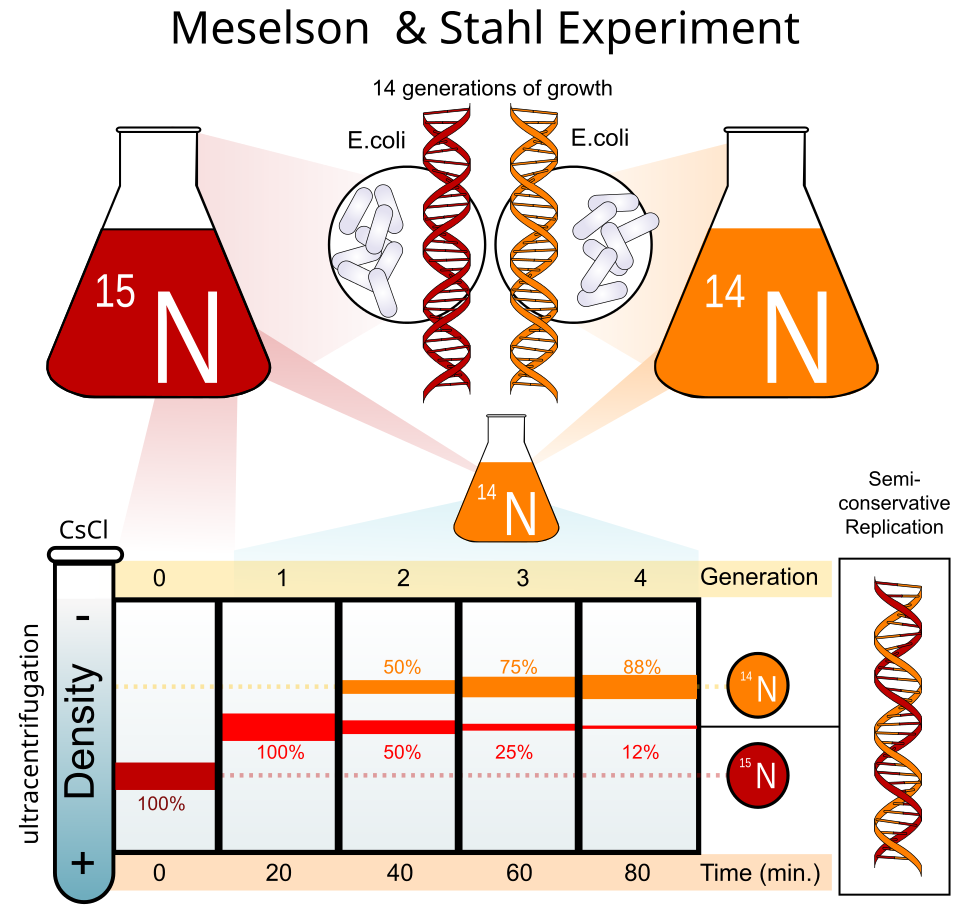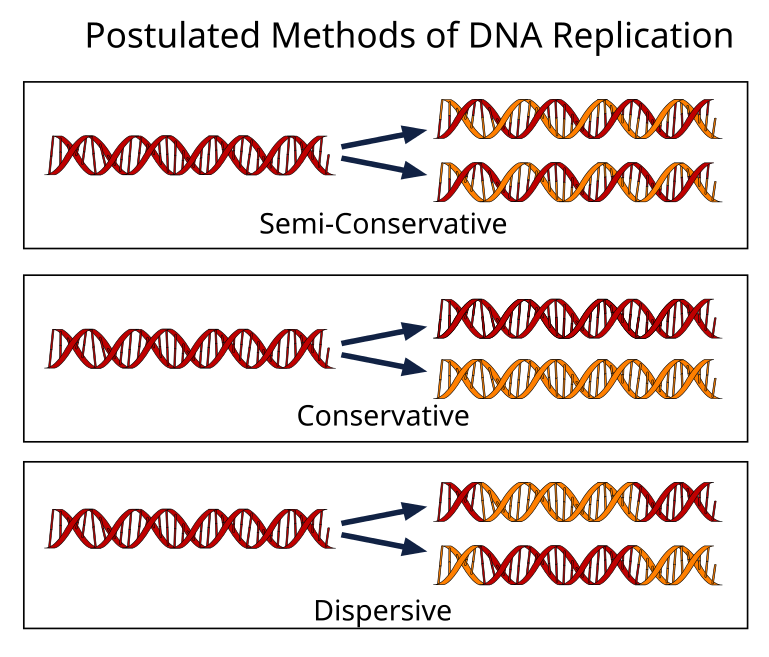Table of Contents
Introduction
Polymerase chain reaction (PCR) is a method of rapidly amplifying or copying a region of DNA in a tube. Before you can understand how this process works, you need to review how DNA replicates in the cell.
DNA Replication Methods
There were three competing hypotheses that sought to explain how DNA replicates. In the semi-conservative method, each strand of a DNA molecule serves as a template for a new strand. The resulting DNA molecules are made of one old strand and one new strand.
In the conservative method, both strands of the original are copied, but the two new strands base pair to make a new molecule and the two old strands reanneal. This results in one old molecule and one new molecule.
The final method is the dispersive method. In this method, the old DNA strands break into fragments. The fragments are copied, and new molecules are made by randomly recombining these fragments. The new molecules are mixtures of old and new fragments.
Today, we know that DNA uses the semi-conservative model thanks to the experiment performed by Matthew Meselson and Franklin Stahl.
Meselson & Stahl Experiment
Meselson and Stahl used the DNA from E. coli to show how replication occurs. They grew the bacteria for several generations in nutrient broth that contained 15N, an isotope of nitrogen that is considered heavy. This heavy nitrogen was incorporated into the nitrogenous bases of the DNA. The bacteria were then transferred to a new medium that contained 14N, a light isotope of nitrogen. Any DNA made after this point would contain this light isotope.
Throughout the experiment, Meselson and Stahl took small samples of the bacteria and isolated their DNA. The DNA was put in a centrifuge, which separated the DNA based on density. DNA that contained 14N would be found higher in the tubes than the DNA containing the heavier 15N. The results can be seen in the image below.

The first sample was analyzed right before switching from 15N to 14N media and it shows that all of the DNA contained the heavy isotope. After one round of replication in the 14N medium, all of the DNA molecules were made of one heavy strand and one light strand (hybrid molecules). This disproved the conservative replication method which would have resulted in 50% heavy molecules and 50% light molecules, not hybrid molecules.
As more samples were analyzed, the number of light molecules increased and the number of hybrid molecules decreased. This disproved the dispersive method, which could not have made DNA molecules that contained only 14N.




